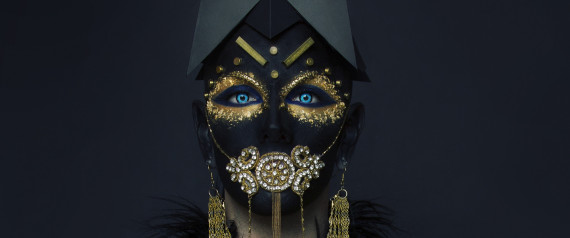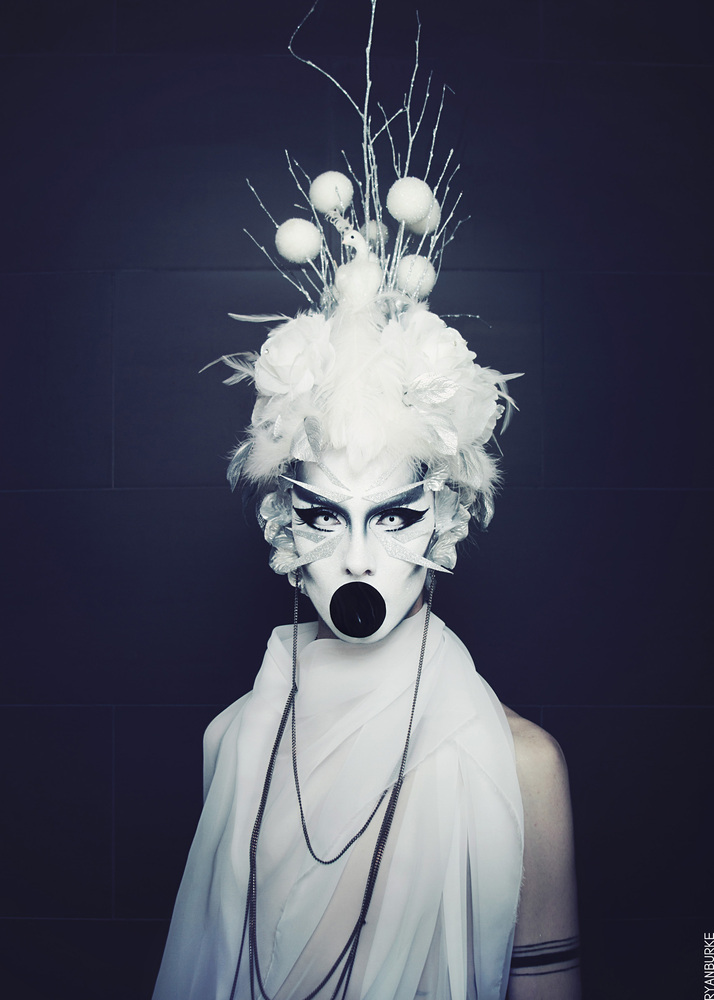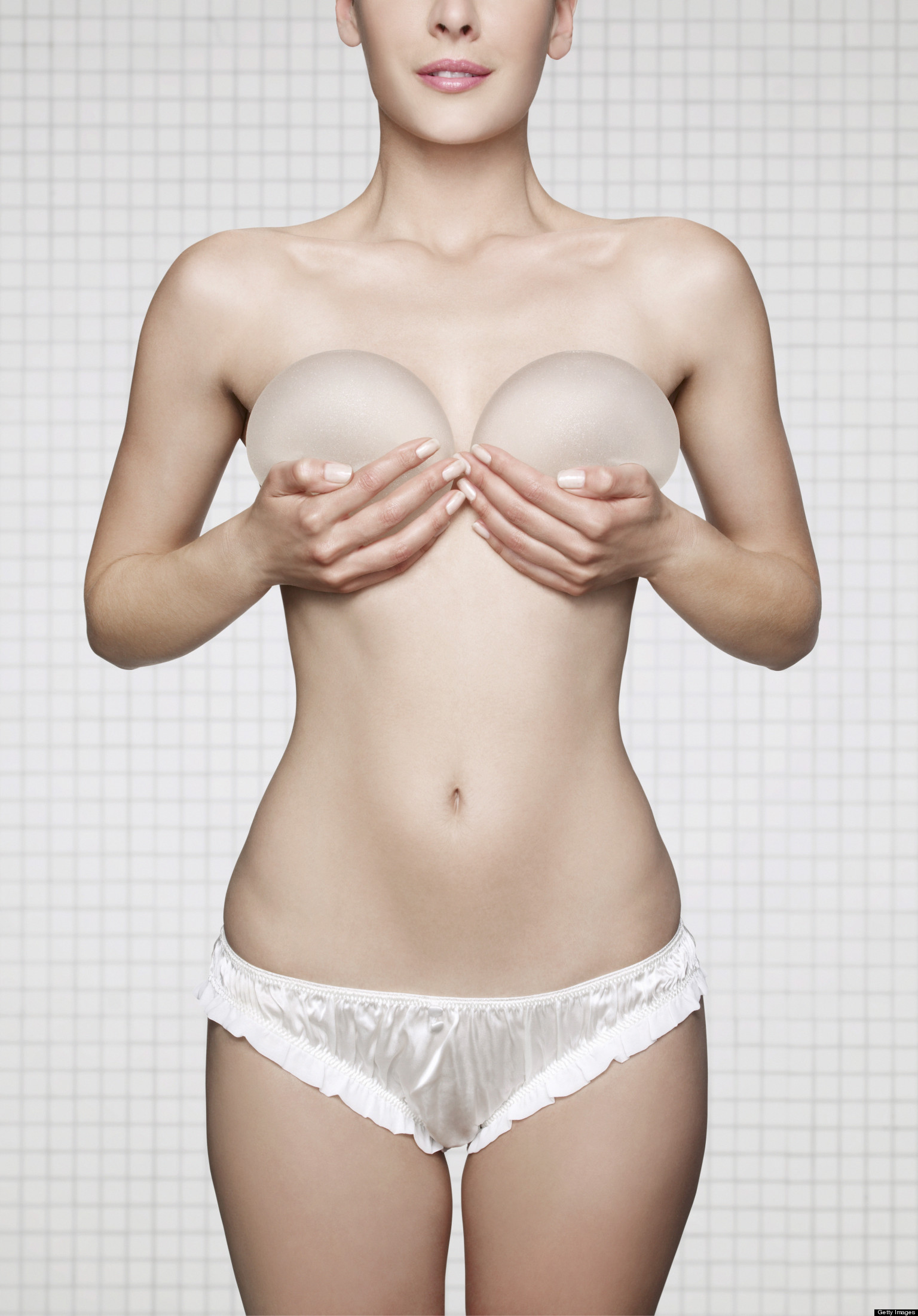After Dark: Meet NYC’s Ryan Burke, Artist And Nightlife Personality
This is the second installment in HuffPost Gay Voices Associate Editor James Nichols‘ ongoing series “After Dark: NYC Nightlife Today And Days Past” that examines the state of New York nightlife in the modern day, as well as the development and production of nightlife over the past several decades. Each featured individual in this series currently serves as a prominent person in the New York nightlife community or has made important contributions in the past that have sustained long-lasting impacts.
HuffPost Gay Voices believes that it is important and valuable to elevate the work, both today and in the past, of those engaged in the New York nightlife community, especially in an age where queer history seems to be increasingly forgotten. Nightlife not only creates spaces for queers and other marginalized groups to be artistically and authentically celebrated, but the work of those involved in nightlife creates and shapes the future of our culture as a whole. Visit Gay Voices regularly to learn not only about individuals currently making an impact in nightlife, but those whose legacy has previously contributed to the ways we understand queerness, art, identity and human experience today.
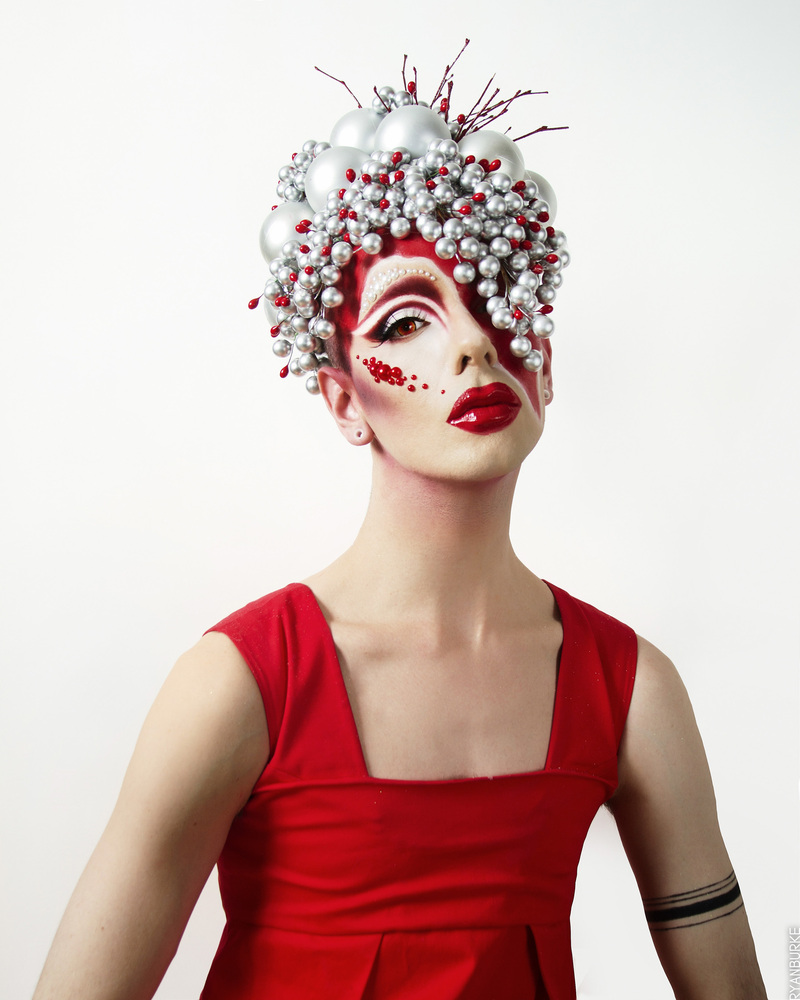
The Huffington Post: What did you journey to becoming a fixture in the New York nightlife scene entail? How did you get to this point?
Ryan Burke: My journey began in Los Angeles. I started dressing up to go to L.A. parties Mr. Black, Rhonda and Mustache Mondays with my friends. After a couple of years of this I started hosting “Mr. Black” with my boyfriend at the time, Oscar Ambrosio, who did looks with me multiple nights a week. We were just doing it for fun and I started photographing us and our friends as a way of documenting our lives. When I moved to New York almost two years ago I intended to leave nightlife behind and focus solely on photography, but once here I realized that all the people I knew through Facebook were involved in nightlife or went out pretty often. I saw it as a way to network and make new friends and connections. I began going out to On Top, Wolf Party, Vandam and other parties and I continued to document my looks. I was consistently out and started to get to know many of the people in the scene.
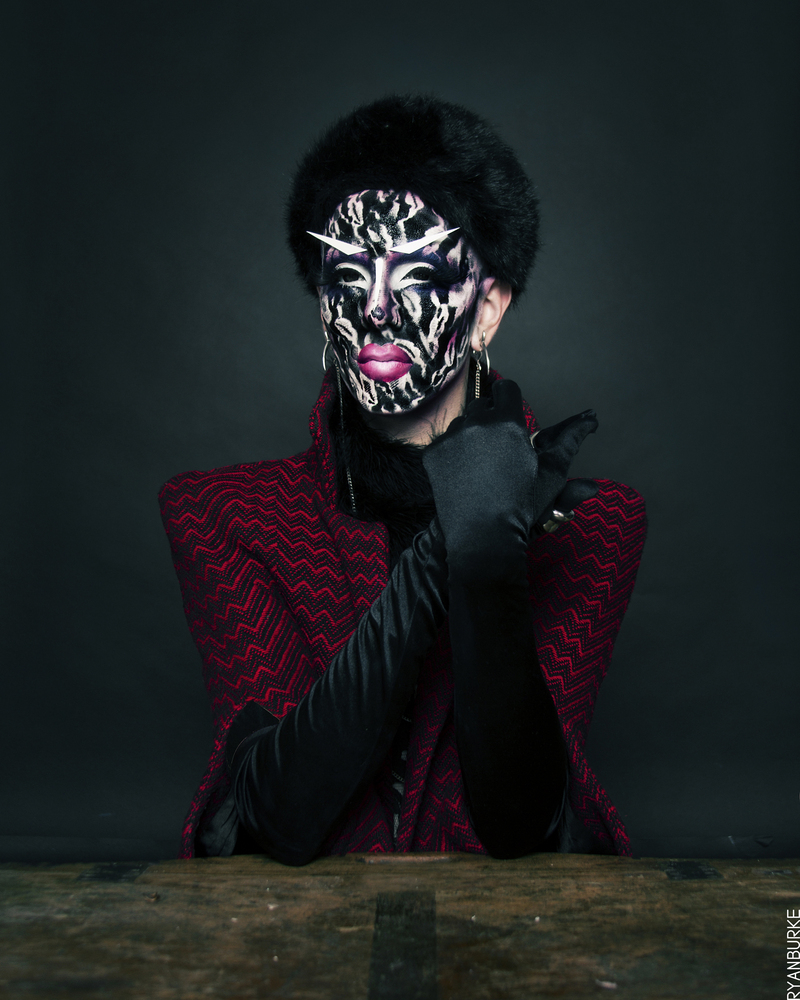
I met designer Domonique Echeverria at “Vandam” one night and we hit it off so I started visiting her and getting closer to her. By the next summer when “On Top” was starting again she suggested I become a host for opening night. Susanne Bartsch hired me and I put my most elaborate look yet together for the opening night. I created a headpiece out of pearls and feathers and my roommate, La Rosa, made a custom gown for me. Domonique and I moved in together soon after and I continued to host off and on the rest of the summer and brought looks inspired by Dovima’s aesthetic — long gowns, big hats or headpieces and an air of elegance. I wore several gowns created by Domonique and shot her looks as well, which started to establish us as a creative team. Since the summer I’ve continued to be a consistent part of nightlife despite the fact that I don’t typically host. I go to a lot of Susanne’s events and Domonique hosts many of them as well.

What kind of work do you tend to produce? How would you say nightlife influences or informs your art?
I still consider myself a photographer first. I find inspiration in everything but usually it is the abstract nature of things that inspires me. I don’t really care for glasses even though my eyesight isn’t great so I see the world in a kind of soft blur of color. Anything can become a reference for a look and I just build off of small and abstract shapes.
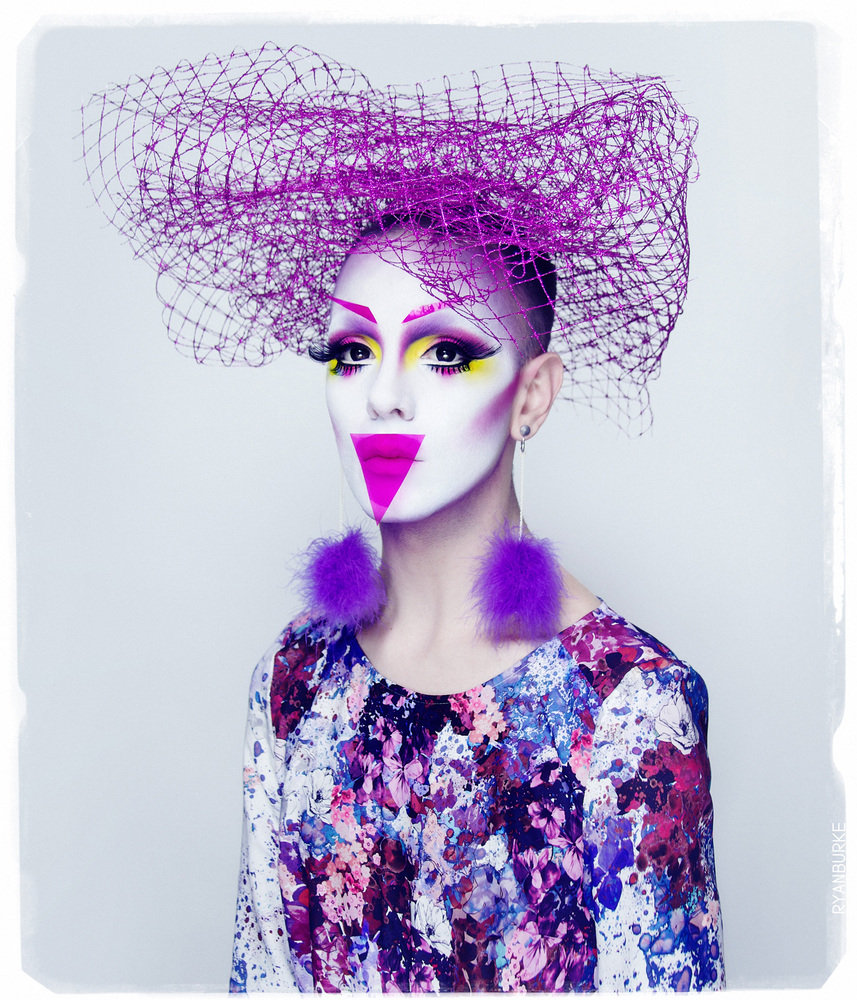
Nightlife is a huge influence on me and the art I produce. The whole idea that you can change your appearance and become something else was demonstrated to me by the nightlife community, who also encouraged my own exploration of ideas. Nightlife has motivated and supported my development. The people I’ve met have inspired me and many have influenced and changed my perspective of the world, gender identity and personal style. I hope to inspire and motivate others by what I do in the same way. But what I encourage isn’t becoming a nightlife socialite — it’s becoming a person who is free to express themselves in whatever way makes them feel the most amazing and comfortable. It doesn’t have to be restricted to just clubs, but clubs are a wonderful place to start and be inspired.
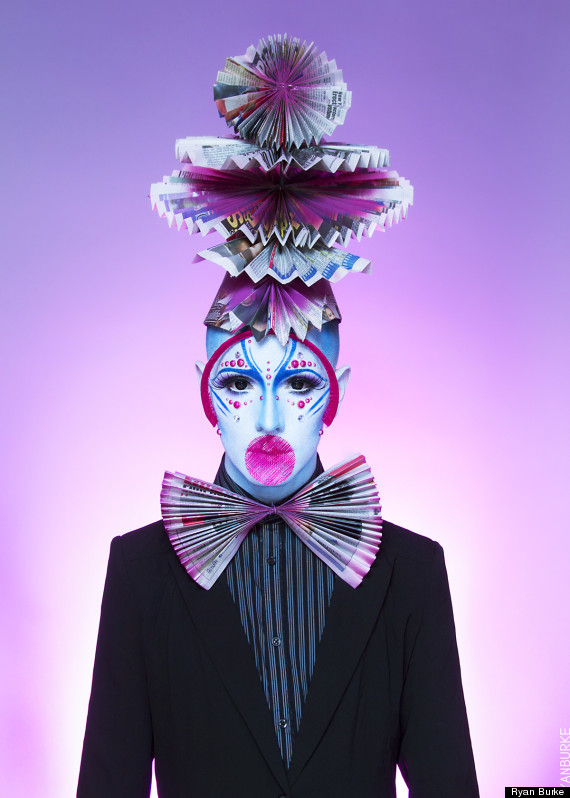
Nightlife has historically been a place for queers and other marginalized groups to subversively create art and build community. As queer identity becomes increasingly mainstreamed, what role do you see nightlife playing in the future of the queer community?
Nightlife has certainly evolved from the days of Stonewall when queer culture was not accepted. Gay people used to have to be very smart and clever in order to survive. Expressing yourself was not easy. Just being yourself was not easy. These days I see gay people becoming stupid on purpose and obsessed with pop culture and there are more and more clubs catering to this sort of crowd. Even drag is becoming mainstream — every other gay person does drag and posts videos of themselves lip-syncing on Instagram. I see nightlife becoming less about underground art and music and more about commercialism. A lot of artists have pulled out of the scene entirely and many are less present than they used to be. While there are still talented drag queens, club personalities and DJs out there, it is becoming a needle in a haystack situation. Many artists I know, myself included, see nightlife as a way to get noticed at first but not a place to stay for long.
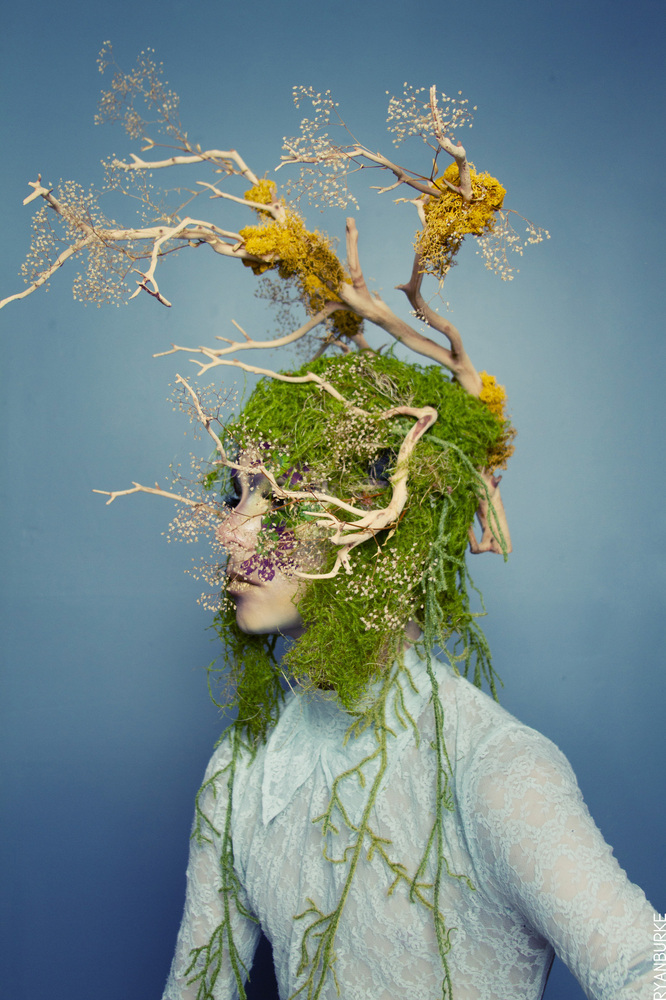
How do you see what is happening now in New York nightlife as building on a historical legacy of artists, performers, musicians and personalities over the past decades?
Historically, the New York nightlife scene has been a stepping stone for many well-known artists in a variety of mediums. While the cost of living and increase in commercialism is making it harder for artists to survive and thrive in this city, I still see an artistic community full of very talented people. I think we are on an upswing right now and I see more and more of a collaboration between artists across the city — and I see many of them come in and out of nightlife.
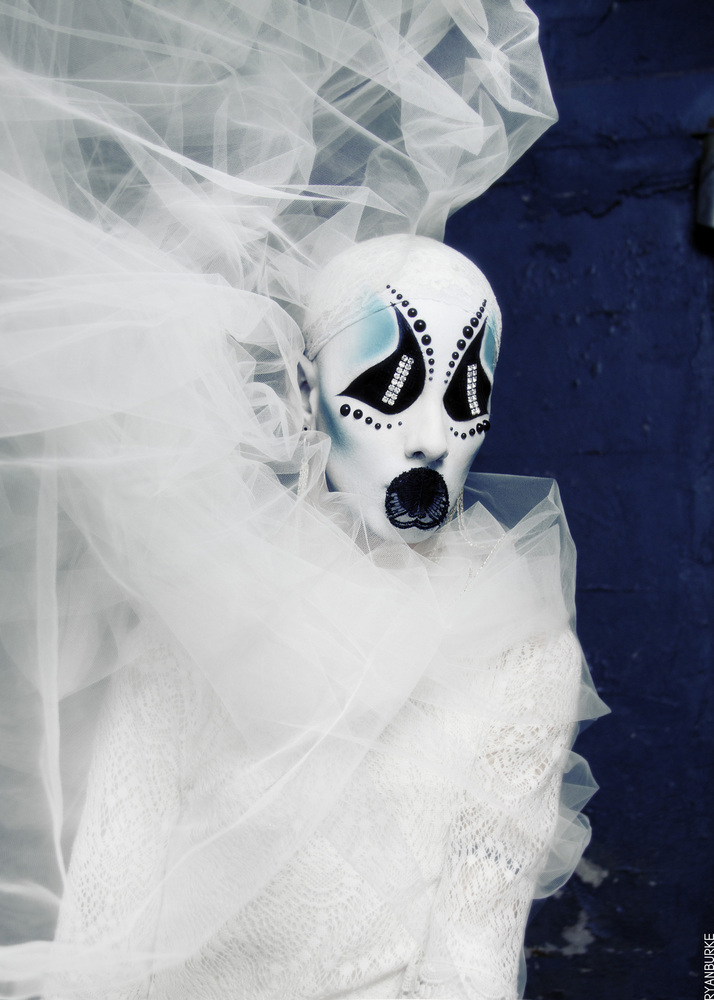
The one major difference between current nightlife and that of decades past is the crackdown on excessive drug use and increase on security and restrictions. While this does create a safer environment to party in it also makes it less of a party atmosphere. People like to go out to get a release from everyday life — and in New York this is especially necessary. I personally have never been much of a drug user but I don’t care for the presence of security and people watching your every move. This controlled environment is less inviting and many people don’t get out and express themselves the way that they used to. Again, the other deterring factor, of course, is the cost of living. Many people I know live in Brooklyn or Queens now and the commute into the city can be difficult, especially in the winter. That said, there are and always will be those who do it because it’s part of their nature. These are the people I relate to and am encouraged and inspired by.
What is the most important thing you see coming out of the way nightlife has shifted and developed into what it is today?
I see driven artists banding together and creating work outside of nightlife. They go out, have some fun, meet people, but work really hard in the meantime to develop their careers because they know that nightlife isn’t lucrative. Some performers, hosts and promoters can support themselves with nightlife but most of us can’t afford to put together looks for fun or even for the small amount we get paid. We do it because we really love it — but it’s not easy these days.
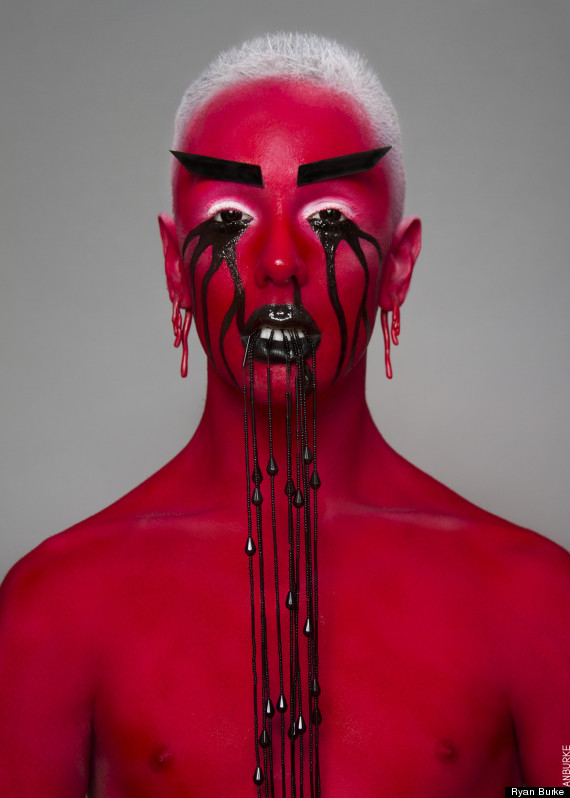
During his feature, which ran earlier this series, original Club Kid Michael Alig told HuffPost: “It seems like nightlife hasn’t really evolved in the past 15 years. I have a whole theory about that. My theory is that we are witnessing the end of our Western cultural dominance in the world and that we’ve gone as far as we can with our Western lifestyle as far as decadence, fashion, style, stuff like that. We’ve done every kind of fashion imaginable from miniskirts to maxi skirts, from peg leg pants to bell-bottoms, from black lipstick to glossy lipstick –everywhere in-between. The only things we can do right now are kind of different variations of the same model and we’ve even done that already. “ — How do you respond to this? Do you agree with him?
I’m no expert on the history and development of nightlife so I can only offer my observation from my own experience. Michael is right in that we have explored every aspect of Western cultural dominance in the world — but I don’t see that as an end to innovative ideas. Everyone has their own reason for dressing up and being part of it. I do it because it’s an innate part of me as a person. I’ve loved dressing up my entire life. Even when I started dressing up to go out, I did it before seeing “Party Monster” or knowing what Club Kids are. Because of this, I don’t draw upon their aesthetic very much. What I do has more of an organic feel to it and I draw my ideas from nature and abstraction.
My creative partner and friend Domonique is a designer and is part of nightlife as a way of exposing others to her designs and fashion ideas. She loves to combine elements from several cultures and eras to create looks that are both familiar and innovative at the same time. While nightlife has always been about freedom of expression and a release from the mundane, I feel that it has evolved in a sense that… it’s not about shocking people or being political, it’s about creating an environment where artists are free to express their ideas, perform, design, entertain and collaborate with each other. There is plenty of room for new ideas, as well as reinterpretation of what’s been done in new ways.
Michael Alig talked a bit about “subverting the establishment” and nightlife in political terms throughout his interview. Nightlife, for you, has never been about being political?
Nightlife, for me, has never been political. I don’t believe that when Club Kids are dressing up and doing drugs it’s about anything other than having fun. It’s just a party. For me, it’s a way of expressing my aesthetic and experimenting with the many ways that I can alter my appearance. Granted, it is definitely easier now than it was a few decades ago. People are more open-minded and that is partly a result of being exposed to this kind of self-expression.
I have been around a lot of club personalities in LA and New York by this point and I would have to say that very few — if any — are doing what they do to subvert the establishment or be political. We all support equality and freedom of expression, of course, and nobody wants to be controlled and monitored by the government, but I find that the majority of club personalities do what they do simply because they love it. They love showing off their ideas, their fashion, their makeup, their music, their outrageous personalities and being around people who appreciate them and understand where they are coming from. I don’t believe that nightlife has the potential to have much of an impact on politics. I think it is more about creating a breeding ground for artistic minds and giving them a group of like-minded peers that they can network and work with if they choose to do so. Otherwise, it’s just a way to escape and have fun.
What projects are you currently working on?
I’m working on a big gallery show in Chelsea on the 26th of June which Susanne Bartsch is putting together. The event is called “bARTsch” and is two doors down from the Chelsea Hotel. I will have three new series of self-portraits which have never been seen and aren’t nightlife-related. There will also be a performance piece with choreographer Olga Dobrowolska with an interactive gown designed by Domonique Echeverria. I’m also working on my looks with Domonique for the Life Ball in Vienna. We will be walking the red carpet and closing the ceremony with David LaChapelle and Carmen Carrera. I’m working on an editorial for a spanish magazine Dromenon, two editorials for Revelation magazine, two personal editorials which I will shop around to different magazines and many other smaller projects. My hope is to produce as much work as possible this year so that I can find an agent.
What do you see as the future of nightlife in New York City?
Nightlife seems to be heading in a direction where groups are mixing with each other. I see more clubs with a mix of gay, straight, Club Kids, drag queens, race, class, age, etc. There will always be clubs geared toward a particular crowd, but even those always have at least a few outliers who wouldn’t normally be associated with that particular scene. This allows for better exposure to all types of people — which is a wonderful thing. As far as Club Kid nightlife goes, I think it will always exist but it won’t be so exclusive or underground. People dress up just because it happens to be their personal style — not because they are going to a particular type of party and only seeing people just like them.
For more from Ryan Burke head here to visit the artist’s website.
Special thanks to James Nichols at the Huffington Post
http://www.huffingtonpost.com/2014/05/25/ryan-burke_n_5374523.html#slide=start
Mindblowing Makeup Artist Ryan Burke
